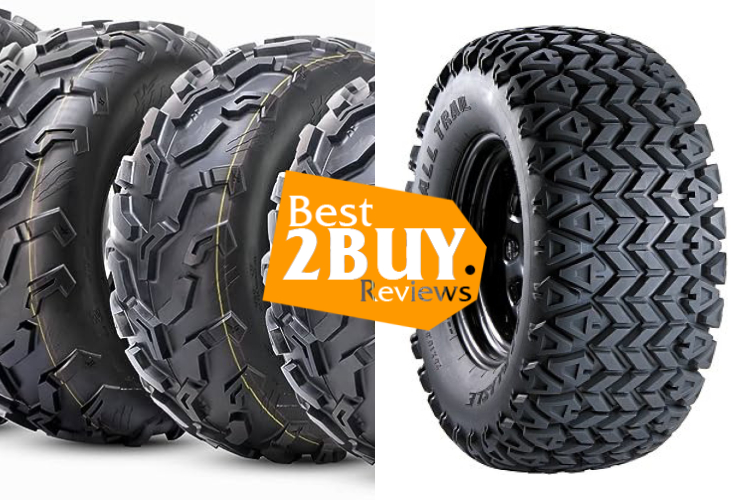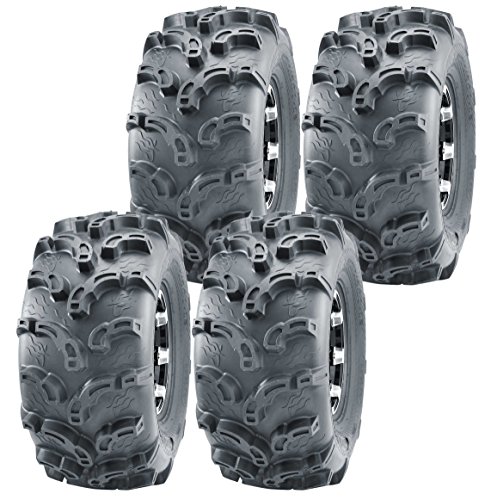How to Choose the ATV Trail Tires
ATV trail tires are specialized tires designed for off-road vehicles called all-terrain vehicles (ATVs) or quad bikes. These tires are specifically engineered to provide optimal performance and traction on various types of trails and terrains, including dirt, mud, gravel, sand, and rocky surfaces.
ATV trail tires typically have aggressive tread patterns with deep, widely spaced lugs or knobs. The large gaps between the lugs help to prevent mud and debris from getting stuck, ensuring continuous traction and minimizing the risk of the tires becoming clogged. The deep lugs provide enhanced grip and stability in challenging off-road conditions.
- 1. The construction of ATV trail tires
- 1.1. Tread Pattern
- 1.2. Tire Compound
- 1.3. Sidewall Construction
- 1.4. Casing Strength
- 1.5. Bead Design
- 1.6. Tire Size and Rim Compatibility
- 2. When we should use ATV trail tires ?
- 2.1. Trail Riding
- 2.2. Mud Riding
- 2.3. Rocky Terrain
- 2.4. Sand Dunes
- 2.5. Off-Road Racing
- 3. How to choose ATV trail tires?
- 4. In Conclusion
The construction of ATV trail tires
The construction of ATV trail tires also differs from regular tires. The construction of ATV trail tires is designed to withstand the demands of off-road riding and provide optimal performance in various terrains. Here are some key aspects of the construction of ATV trail tires:
Tread Pattern
ATV trail tires have an aggressive tread pattern with deep lugs or knobs. The lugs are the raised portions on the tire's surface that make contact with the ground. These lugs are designed to provide excellent traction and grip on different types of terrain, including dirt, mud, and rocks. The spacing between the lugs allows for self-cleaning, preventing mud and debris from getting stuck and maintaining traction.
Tire Compound
The rubber compound used in ATV trail tires is formulated to offer a balance between grip, durability, and resistance to wear. The compound is often designed to withstand rough terrain and provide good traction in both wet and dry conditions.
Sidewall Construction
ATV trail tires have reinforced sidewalls to provide increased puncture resistance and protection against impacts. The sidewalls are designed to withstand the forces exerted on the tires during off-road riding, reducing the risk of cuts or damage from rocks, branches, and other obstacles.
Casing Strength
The casing of ATV trail tires is constructed to be sturdy and durable. It is typically made using multiple layers of strong materials, such as nylon or Kevlar, to enhance strength and resistance to punctures. This construction helps prevent tire damage and improves overall tire longevity.
Bead Design
The bead of an ATV trail tire is the part that securely attaches the tire to the wheel rim. It is typically reinforced with steel or other strong materials to ensure a tight seal and prevent the tire from detaching from the rim during intense off-road riding.
Tire Size and Rim Compatibility
ATV trail tires come in various sizes to fit different ATV models and wheel sizes. It's important to choose a tire size that is compatible with your ATV and its wheel rim specifications to ensure proper fitment and performance.
Overall, the construction of ATV trail tires focuses on durability, puncture resistance, traction, and stability to withstand the challenges of off-road riding and provide a reliable and capable tire for trail enthusiasts.

When we should use ATV trail tires ?
ATV trail tires are specifically designed for off-road use and excel in various trail and off-road conditions. Here are some situations where ATV trail tires are commonly used:
Trail Riding
ATV trail tires are ideal for recreational trail riding. They provide excellent traction and stability on a variety of terrains such as dirt, gravel, and forest trails. These tires are designed to handle uneven surfaces, ruts, and obstacles commonly found on trails.
Mud Riding
If you frequently ride in muddy conditions, ATV trail tires with aggressive tread patterns are a great choice. The deep lugs and wide spacing between them help to channel mud away from the tire, maintaining traction and preventing the tires from getting bogged down.
Rocky Terrain
ATV trail tires with reinforced sidewalls and durable construction are suitable for rocky terrains. They provide better protection against cuts and punctures from sharp rocks, and the aggressive tread pattern helps grip uneven surfaces.
Sand Dunes
ATV trail tires with paddle-like or scoop-like tread patterns are designed for riding on sandy surfaces such as sand dunes or beaches. The design allows the tires to dig into the sand, providing the necessary traction to navigate through sandy areas.
Off-Road Racing
ATV trail tires are commonly used in off-road racing competitions. They offer the required grip and durability to withstand the rigors of racing on challenging terrains.
It's important to consider the specific terrain and conditions you will be riding in when choosing ATV trail tires. The tread pattern, tire size, and tire construction should be selected based on your riding preferences and the type of terrain you expect to encounter
How to choose ATV trail tires?
Choosing the right ATV trail tires involves considering several factors. Here is a step-by-step guide to help you make an informed decision:
Determine Your Riding Style and Terrain
Consider the type of terrain you will be riding on most frequently. Whether it's mud, rocks, sand, or a mix of terrains, knowing your riding style will help you select tires that excel in those conditions.
Assess the Tread Pattern
Look for ATV trail tires with an aggressive tread pattern. Deep lugs and widely spaced treads provide better traction and self-cleaning capabilities, preventing mud and debris buildup. Tires with multi-directional tread patterns are versatile and perform well on various terrains.
Consider Tire Size
Check your ATV manufacturer's specifications or consult the owner's manual to determine the recommended tire size. Consider factors like clearance, suspension travel, and handling characteristics. You may also want to upgrade to larger tires for enhanced ground clearance and improved off-road capability, but be mindful of any potential modifications required.
Ply Rating and Construction
Determine the appropriate ply rating based on your needs. Higher ply ratings indicate stronger sidewalls and increased puncture resistance, but they may sacrifice ride comfort. Consider whether bias-ply or radial tires suit your requirements. Bias-ply tires offer durability and strength, while radial tires provide a smoother ride and better traction.
Brand Reputation and Reviews
Research reputable tire brands known for their quality and performance in the ATV industry. Read customer reviews and seek recommendations from fellow ATV enthusiasts. Pay attention to feedback on tread life, traction, durability, and overall performance.
Budget Considerations
Set a budget range for your ATV trail tires. While it's important to invest in high-quality tires, balancing cost and performance is essential. Compare prices and features from different brands to find the best value for your money.
Seek Expert Advice
Consult with ATV tire specialists or dealers who have experience and knowledge in the field. They can provide personalized recommendations based on your specific ATV model, riding style, and terrain preferences.
Remember, choosing the right ATV trail tires is crucial for your safety and optimal performance on the trails. Take your time, do thorough research, and consider all the factors mentioned above to make an informed decision.
In Conclusion
Having the right ATV trail tires is essential for any off-roading enthusiast. Mud terrain tires and 25x10x12 ATV tires are two of the most popular choices for all-terrain vehicles, providing the power and traction needed to tackle rough terrain. When selecting ATV trail tires, it is important to consider the type of terrain you will be navigating, as well as the size and weight of your vehicle. Reading carefully our evaluations in website, you can easily find a suitable ATV trail tires in Amazon and saving time as well as money.










